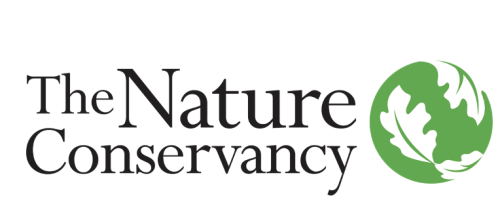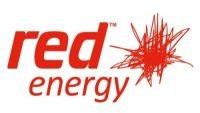
With SAS Viya®, there's no such thing as too much information.
SAS Viya - AI & Analytics
Data Tribes has partnered with SAS to ensure confident decisions, maximum value,
faster outcomes and open integration. With SAS' fully integrated, open source, cloud-native
AI and analytics platform, you can understand what's happening with your data now,
predict how to pivot seamlessly, and make progress faster.
The SAS Viya Advantage
Bring your own Language
SAS understands that everyone has a preferred language when it comes to their work. SAS Viya makes it possible to integrate teams and technology across the analytics life cycle, enabling all types of SAS and open source users to collaborate. SAS Viya uses PROC CAS to run CAS actions in SAS Cloud Analytic Services.
Use REST APIs for any client language to access SAS analytics, data and services.
Use Python APIs to apply SAS Viya CAS actions.
Use R APIs to apply SAS Viya CAS actions.
Use Java APIs to apply SAS Viya CAS actions.
Use Lua APIs to apply SAS Viya CAS actions.
Use iOS and Android SDKs to create mobile apps that access content in SAS Viya.

ESG Management & Reporting
to address environmental and social initiatives, risk management goals, governance requirements, auditing, third party needs and supply chain management.
With SAS' assessment tool, you can design a variety of assessments, such as environmental and social impact assessments, third-party risk assessment, physical and transition risk assessments and more.
SAS' ability to capture and manage complex and large data sets solves many of the commonly faced issues within sustainability initiatives, such as converting utility bills into data, streaming real-time data related to consumptions etc.
SAS offers a holistic approach to monitoring, managing and reporting ESG compliance. Our flexible approach lets you start small and expand later.
SAS delivers scalable, in-memory reporting environment that is easy to use. The combination of interactive data exploration, dashboards and analytics helps users find valuable insights without coding or advanced data science skills
With SAS' IoT technology, you can track consumption through sensors placed at different locations, then use the consumption data in your disclosures. For example, you can use this technology for tracking energy efficiency at different office locations around the world in real-time and stay alerted to unusual consumption behaviours.
The rules and benchmarks for ESG reporting are still in flux. Organisations need a system that is flexible enough to comply with current requirements while being able to evolve to accommodate future needs.
Clients' ESG Solutions

The World Wildlife Fund (WWF) has investigated how to use its channels to ensure its donor base stays active, aware and engaged. To do this, WWF analysed what types of donors it has, what channels donors are most likely to use and how long they are likely to remain donors. SAS created donor lifetime value models to predict each donor's future giving, allowing WWF to determine the best time and way to reach out to individuals. This level of personalisation will bolster relationships with WWF donors and constituents.
World Wildlife Fund
The Nature Conservancy collaborates in 76 countries and territories with nonprofit partners. The organisation faces challenges as its data sources and software often don't align. However, through digital transformation with SAS Customer Intelligence 360, the organisation successfully tackled this issue. With improved fundraising efficiency and enhanced donor retention, this global nonprofit achieved its most successful year ever for membership revenue, furthering its mission of building a more sustainable future.

Climate-related weather events like fires and floods are on the rise, endangering communities and wildlife. To help monitor, measure and mitigate many of the effects of climate change, from bushfire ignition and flooding to air quality and environmental health, Australian engineering firm Attentis has designed and manufactured intelligent sensors. Equipped with AI-embedded SAS Analytics for IoT, local officials can use real-time information to identify hazards such as a smoldering fire or rapid water-level rise and respond immediately.

Using IoT sensors and a digital twin of the installation, the manufacturer began capturing additional types of parameter data to forecast performance under a wider range of circumstances. By applying advanced analytics, they increased power plant efficiency, avoided unplanned outages, and improved maintenance planning.
Running power plants more efficiently is one obvious way to reduce GHGs. Analytics also helps manufacturers achieve benefits such as minimising carbon emissions while meeting demand reliably and affordably.

SAS and IIASA launched a project asking online volunteers to help identify areas of deforestation in more than 90,000 satellite images. Participants from 130 countries have successfully classified more than 1 million square kilometres of the Amazon.
The result is a crowd-trained suite of AI models that can now monitor new areas autonomously and detect deforestation with better than 90% accuracy. Unlike the human eye, computer vision model could be applied to near-infrared images in the future for even greater accuracy.

The shift to clean energy starts with gaining insights into customers' needs. Red Energy recognised this as they prepared to launch their battery and solar operation. To expose sales opportunities, Red Energy asked SAS to advise them on which data to collect and how to interpret it. They learned how the data could be used to complement marketing campaigns - while feeding intelligence back into the framework to inform future decisions. Now the company is much better prepared to transition customers to clean energy sources - when and how it makes the most sense for their customers.
Red Energy
SAS has collaborated with the UNC Center for Galapagos Studies on multiple sustainability projects. One such project involved analysing data collected over nearly two decades to understand the movement patterns of Galapagos' hammerhead sharks. SAS analytics volunteers used SAS analysis and visualisation software to identify patterns and factors influencing the sharks' movements. SAS also partnered with UNC on projects related to sea turtles and phytoplankton populations, using computer vision and modelling techniques to monitor and protect these important species.
The Healthy Reefs for Healthy People Initiative uses data gathered by their scientists to better understand the overall health of the Mesoamerican Reef, a diverse system of coral reefs located off the eastern coast of Central America and Mexico. Data visualisations created in SAS Visual Analytics can help governments and organizations prioritize actions that balance the thousands of interconnected organisms, from fish to coral to algae, in this fragile ecosystem.
Healthy Reefs